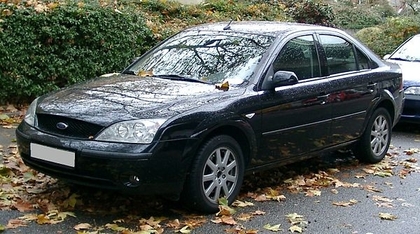Ford Mondeo (second generation)
Updated:
7 Sep 2020
The Ford Mondeo MK III (second generation) model was launched by Ford in October 2000. This Mondeo was considerably larger than its predecessor, and although Ford abandoned its New Edge design theme for the second generation, it was their first vehicle to fully benefit from the Prodigy concept car. This gave it an overall effect which many critics felt was more restrained and mature, if much less distinctive. Two of the old car's biggest weaknesses, the modest rear legroom, and uncompetitive diesel version were addressed by a longer wheelbase and the new Duratorq diesel engine. The basic chassis and suspension design was carried over from the previous generation, which meant that the car continued its predecessor's reputation for class leading handling and ride. This Mondeo came to Mexico, replacing the North American built Ford Contour, and was sold from 2001 to 2007, when the Ford Fusion replaced it. The North American market Fusion and Ford Five Hundred/Taurus sported very similar styling, inside and out. Following the standard setting interior of the Volkswagen Passat (B5) in 1996, Ford paid a great deal of attention to the second generation Mondeo's interior and was the first major American manufacturer to react to the new standard set by Volkswagen. Ford dispensed with the rounded American style interior of the first generation, and developed a more sober 'Germanic' design, which not only seemed more sophisticated but, more importantly, was of a higher quality due to the use of more expensive materials. This Mondeo simplified trim levels a lot, for example the UK trims had been simplified down to LX, Zetec, Zetec S, Ghia, Ghia X and ST. Despite this, a mid-cycle facelift in 2003 saw the introduction of some new trim levels. Titanium and Titanium X slotted in between Zetec S and Ghia, and ST220 slotted in above ST. As with its predecessor, passive safety was a major selling point of the 2000 Mondeo. With an even stronger bodyshell, Ford introduced its so-called "Intelligent Protection System" (IPS), which used an "intelligent" array of sensors based on a neural network to decide the best combination of safety devices (traditional front passenger airbags, side airbags and curtain airbags) to deploy for a given crash situation. To enhance active safety, all models were fitted with anti-lock brakes and electronic brake-force distribution, with electronic stability program (ESP) available as an option. Performance blue was also an option at a staggering £2000. Ford's marketing of the time claimed the Mondeo was 'One of the safest places to be'. However, Euro NCAP's testing of the 2000 to 2007 Mondeo found that it protected worse than most key rivals (Vauxhall Vectra, Citroën C5, Toyota Avensis, Volkswagen Passat), achieving a lower-end 4 star rating. Ford redesigned part of the car and it was re-tested, but the higher-than-average risk of chest injury to the driver in the frontal impact remained because the first and second generation Mondeo were based on the relatively dated CDW27 platform which related to the Mazda GE platform designed in late 1980s. The Mondeo established itself as Britain's most popular automobile in its class and held this position every year from 2001 onwards, though this size of car has fallen slightly in popularity during the 2000s. This version of the Mondeo has never come higher than sixth in the SMMT's official list of the top selling cars in the UK each year. In 2003, it came tenth in the list. The second generation Mondeo was never sold in Australia, as Ford Australia argued that the segment of the market was in decline. However in neighbouring New Zealand, it was voted Car of the Year in 2002 by the New Zealand Motoring Writers' Guild.




